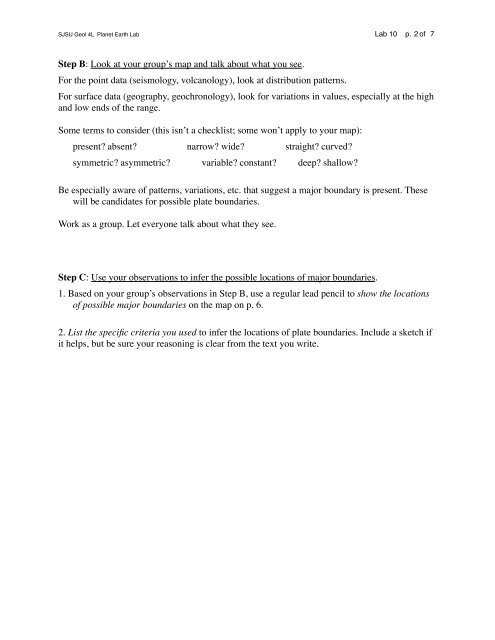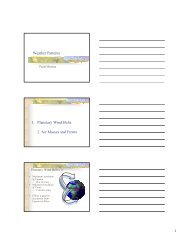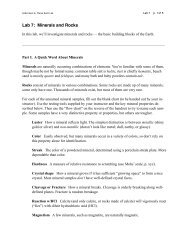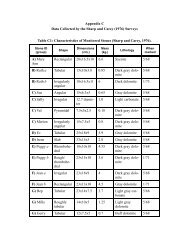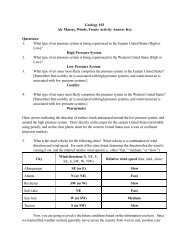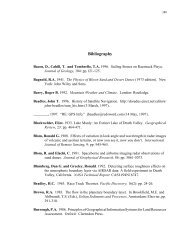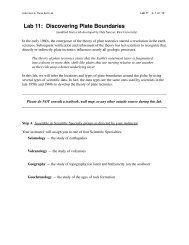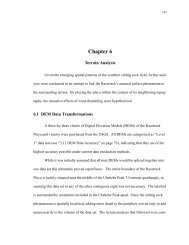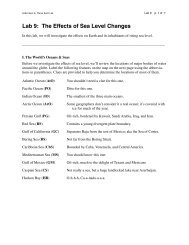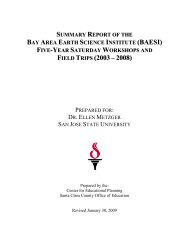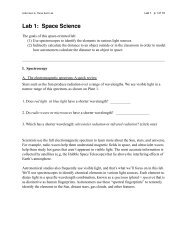Lab 10: Discovering Plate Boundaries
Lab 10: Discovering Plate Boundaries
Lab 10: Discovering Plate Boundaries
- No tags were found...
You also want an ePaper? Increase the reach of your titles
YUMPU automatically turns print PDFs into web optimized ePapers that Google loves.
SJSU Geol 4L Planet Earth <strong>Lab</strong> <strong>Lab</strong> <strong>10</strong> p. 2 of 7Step B: Look at your group’s map and talk about what you see.For the point data (seismology, volcanology), look at distribution patterns.For surface data (geography, geochronology), look for variations in values, especially at the highand low ends of the range.Some terms to consider (this isn’t a checklist; some won’t apply to your map): present? absent? narrow? wide? straight? curved? symmetric? asymmetric? variable? constant? deep? shallow?Be especially aware of patterns, variations, etc. that suggest a major boundary is present. Thesewill be candidates for possible plate boundaries.Work as a group. Let everyone talk about what they see.Step C: Use your observations to infer the possible locations of major boundaries.1. Based on your group’s observations in Step B, use a regular lead pencil to show the locationsof possible major boundaries on the map on p. 6.2. List the specific criteria you used to infer the locations of plate boundaries. Include a sketch ifit helps, but be sure your reasoning is clear from the text you write.


